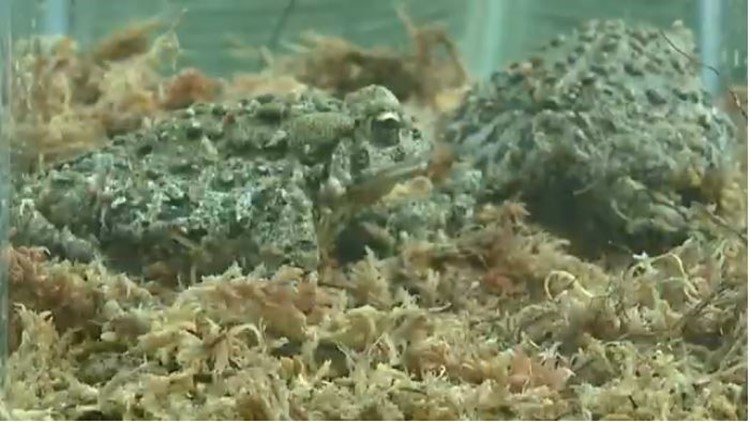Never judge a book by its cover. The boreal toad isn’t very attractive to look at but is one of the most fascinating animals Becky's Beasts has featured so far.
Derek Cossaboon, a Zoo Keeper at the Denver Zoo, explained how this native amphibian will surprise you.
"As anybody who has been to the high country knows, it gets very cold in the winter. And these guys will burrow down and hibernate below the frost line," Cossaboon said. "And to simulate that here in the zoo we have modified a refrigerator where we put them in little hibernaculum boxes and keep them in the refrigerator for 4 to 5 months of the year, and bring the temperature down to just above freezing."
BECKY'S BEASTS | Elephants love to swim in the rain
The boreal toad lives in a region where many plants cannot even survive. But its ability to burrow deep into the earth is what helps it to survive. The coldest temperature the toad can withstand is between 34 and 36 degrees. Even that is an amazing feat for an animal that does not have the ability to produce its own body heat.
When the boreal toad comes out of hibernation they will wait until the daytime temperature stays above freezing and the snow melt has receded enough before they come out of their burrows. Unlike humans, this toad doesn’t have instruments or a meteorologist to tell them this, they just know.
BECKY'S BEASTS | These lions get some help when it comes to dealing with cold weather
Hibernation is a process that must happen, especially for this species to survive.
"Most of the temperate species on this continent do need a hibernation period to produce viable eggs or sperm. So that’s what we try to simulate to get them to be reproductive," said Cassaboon. "And if we can get them to breed here at the zoo we will release their offspring into the mountains."
And that help is vital to the survival of the boreal toad.
Their numbers are declining, even here in Colorado, due to something called the chytrid fungus. It breaks down the keratin in the outer layer of the toad's skin and affects their ability to osmo-regulate electrolytes and salts through their skin. That electrolyte imbalance ultimately leads to cardiac arrest.
BECKY'S BEASTS | Sea lions, like a lot of us, get fatter in the winter months
The fungus occurs on every continent except Antarctica and for some reason, right now, it’s thriving and really doing quite a bit of damage to the amphibian populations around the world.
That's why the Denver Zoo is working so hard to protect and save this species.



